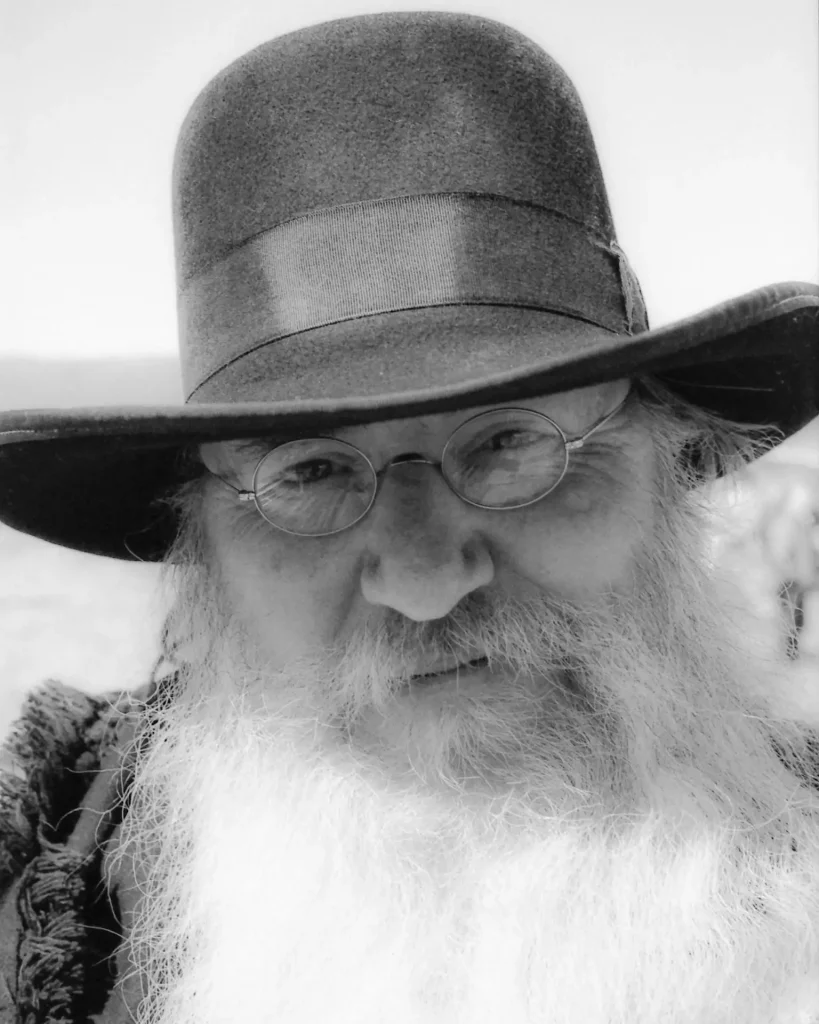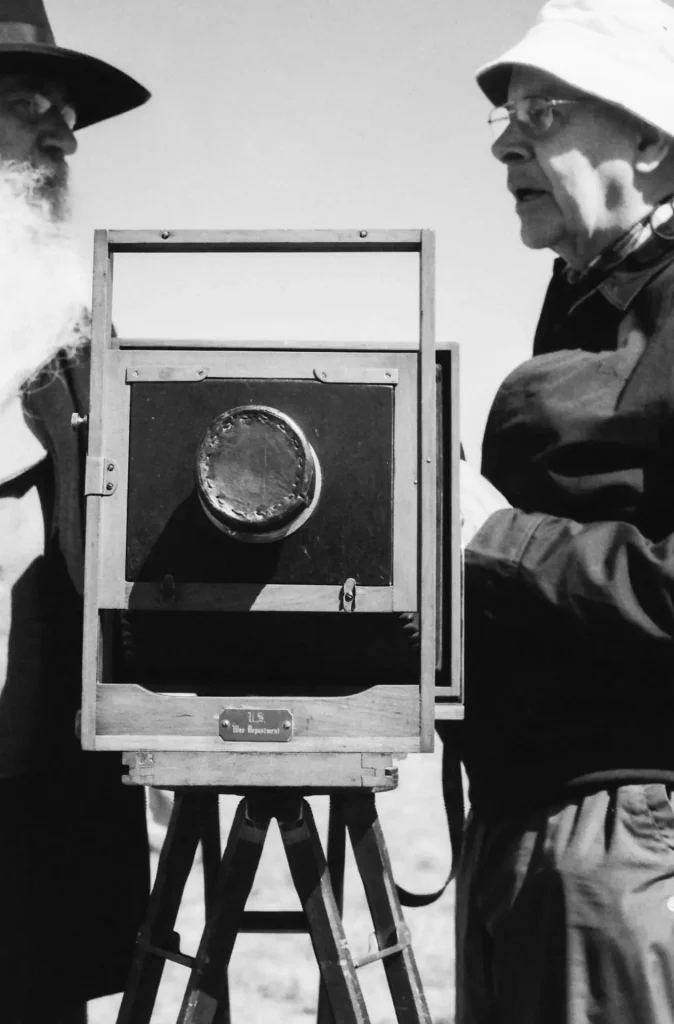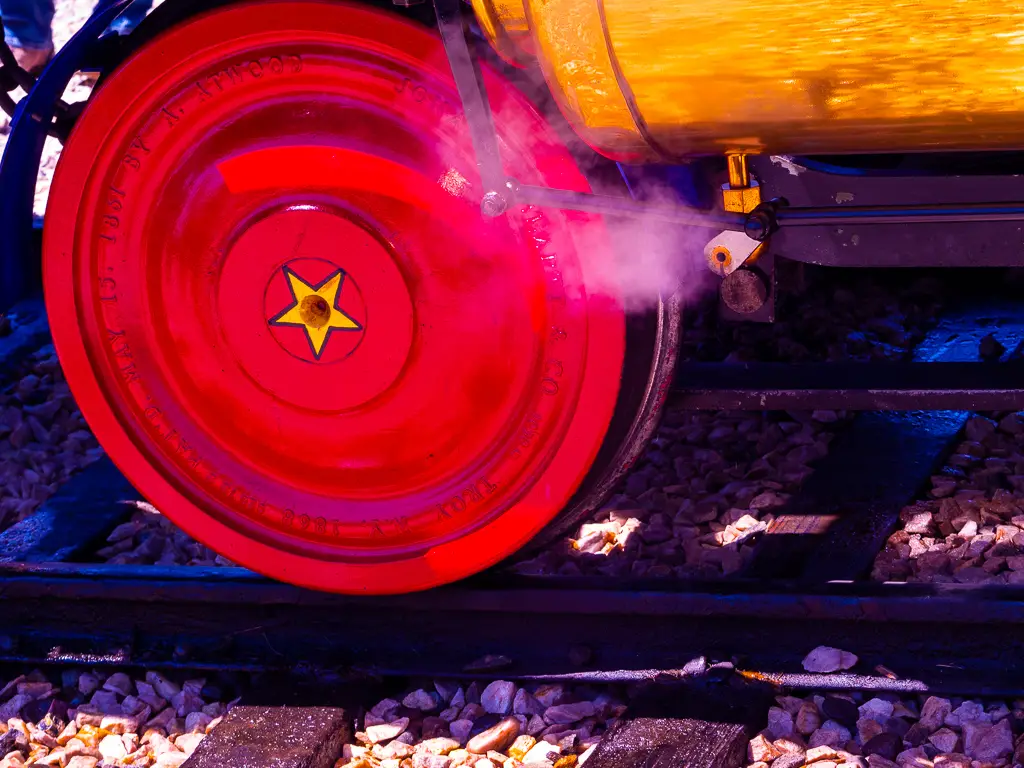Train detail, shot with Lumix digital camera
The highlight of the sesquicentennial celebration of the transcontinental railroad for me was meeting an amateur photographer toting his vintage field camera. I was honored to be there on May 10, 2019, for the 150th anniversary of the Golden Spike ceremony at Promontory Point, Utah, when the line from the west and the line from the east were joined in standard gauge, an iron bond that brought together the United States as a nation, realizing Manifest Destiny. The event was historic, and it included the diversity of this “shining city upon a hill” as had not been done at the actual moment, nor a half century earlier, for the centennial in 1969, when actor John Wayne’s appearance led to representatives of the Chinese American community being forced off the program.
Approximately 15,000 Chinese laborers constituted almost all of the western work crew, which also included Irish immigrants, former soldiers from the Union and Confederacy, Native Americans who were displaced from their territory, African Americans who had only recently been emancipated, and recruits from the then-new Church of Jesus Christ of the Latter Day Saints. Their descendants had invited me to speak at a conference. They included sixth-generation Californians, some of mixed ancestries. They were among the sizable delegations at the festivities, who included railroad aficionados, public officials, and more than a few locals. We had boarded charter buses early in the morning for the trek to the national park, issued two bottles of water to ensure we were hydrated under the desert sun.
Photography is very much part of the story of the transcontinental railroad. It was the most massive infrastructure project of its era. Congress supported it with subsidies and grants of land for every mile of track that was laid. Some of the politicians back then having what would be called out as conflicts of interest today, i.e., investments that would increase in value as a direct consequence of their own vote.
Professionals were hired to record the feat of engineering. They had to provide proof that the speculative enterprise was likely to pay off. The extensive documentation preceded, accompanied, and followed the toil. The images generated enthusiasm for the business and the tourism that they predicted, accurately, would follow, in measures beyond what could be calculated. It would be difficult to overstate how the transcontinental railroad transformed everything from the delivery of food and goods to where the ambitious might move and settle to the possibilities for vacation and recreation. The frontier was conquered and opened. “The United States of America” was once spoken of as a plural, as in “the United States of America are” this or that, and the subtlety of grammar, the “United States is,” indicates heartfelt unity.
Among the most famous pictures of the American nineteenth century, taken by Andrew J. Russell, depicts the rail barons in the foreground with the Jupiter and No. 119 locomotives in the background. Russell was a painter and photographer, trained by someone trained by Matthew Brady, and selected as the Army’s inaugural photographer. His work, glass-plate collodion negatives, are held by the Oakland Museum. He made prints en route, in a wagon that had a tent inside. His album, published in 1869, was a best seller. The photographs were reproduced in advertising and available as magic lantern slides (the format that preceded the Kodak slide carousel).
Chinese have been aggrieved ever since, because there are no Chinese among the revelers — except that there may be one of the faceless men in the crowd, at least his hat, as he turns his back to the artist. At least three photographers have recreated the photos of the period. My friend Corky Lee, restages the ritual moment with a cast of Chinese Americans, as part of an annual pilgrimage to the isolated site. Lee, the son of a laundryman, has designated himself the “undisputed unofficial” photographer of Asian Americans, and he has lived up to the billing by attending all manner of community events, coast to coast, since his 1975 shot of a protest march from Chinatown to City Hall in Manhattan made the cover of the New York Post tabloid. Over at the California Historical Society in San Francisco, on exhibit was Mark Ruwedel’s series entitled “Westward the Course of Empire,” a 14 year project using a large-format camera to depict defunct rail lines. At the Kimball Art Center in Park City, Utah, on exhibit was Zhu Lin’s “Chinaman’s Chance,” a multi-media piece with photos, film, and rocks used as track ballast (the bed upon which railroad ties are overlaid), for visitors to write the names of the forgotten workers, scattering the remembrances on the floor, above which is projected replicas of the trains. (The phrase, considered pejorative, is derived from the risks taken by Chinese workers, such as being lowered in a wicker basket with sticks of dynamite, a new technology that had not been perfected, to blast through solid granite, with the probability of a fatal explosion.)

My encounter with the photographer was a highlight because of how congenial he was. He took the time to explain how he had made his field camera. He himself had done the carpentry on the box and the leatherwork for the bellows, affixing a lens he had purchased. He showed me the plates in this leather bag, set up beforehand, double sided, ready to be loaded. He allowed me to peer through lens, trying to focus an upside down, left-right flipped portrait of a pair of reenactors in costume. I was grateful. He did not mind a stranger handling an apparatus could have been damaged easily with a careless knock.
Then he uttered an important statement about his hobby — it gave me insight into why I, too, partake in the pastime albeit with the ease of the 35mm format. I asked how much he would be able to do over the course of the day. He answered the maximum was thirty, out of that he would be lucky to have focused ten, and then perhaps for keepers there would be a total of three. He said he would count that a success. Changing from digital to film calls for changing the method of photography, and changing from 35mm to large format more so. There is a difference between efficiency and effectiveness.

The point is that the process matters more than the product. That is the opposite of how it is for the professional. The pioneer who was operating a field camera when it was a new gadget had to come through to earn a fee. The client would not care much about the skill involved. They might wonder about the technology. But the pleasure of the photographer was merely incidental. A photo was valuable. It was not disposable. Such a memento was permanent, a keepsake, to be inserted in a frame or locket, fashioned from a precious metal.
For the acquaintance I struck up (whose name, rudely, I failed to record, rendering him anonymous to me as the railroad workers had been to their bosses), I infer, and for me, however, the process is the point. The truth is I care as much about the joy of looking for the subject, figuring out how to compose the scene, setting the exposure best, and being both patient enough to wait as well as decisive enough to capture the moment, as I do how the negative turns out. I like editing. Although I enjoy ending up with a print, I rarely do.
There is much in life that is more process than product. Democracy, likewise, is a process instead of a product. It is not so much a means to an end as an end in itself. You cannot buy it, nor own it, without destroying it. It cannot be finished, other than as tragedy. Democracy is about participating. It is an exercise of rights and a fulfillment of responsibilities.
“Photograph” is a verb as well as a noun. For those of us privileged to have a day job enabling us to acquire equipment and film, the verb can take precedence over the noun.
Share this post:









Comments
Alan Withington on Meeting the Vintage Field Camera Man at the Golden Spike 150th Anniversary – By Frank H. Wu
Comment posted: 01/11/2019
John Haney on Meeting the Vintage Field Camera Man at the Golden Spike 150th Anniversary – By Frank H. Wu
Comment posted: 01/11/2019
For me it is almost all about process with very little result.
This is not what I would have expected.
It is what I have found out.
Roger B. on Meeting the Vintage Field Camera Man at the Golden Spike 150th Anniversary – By Frank H. Wu
Comment posted: 02/11/2019
Harry Machold on Meeting the Vintage Field Camera Man at the Golden Spike 150th Anniversary – By Frank H. Wu
Comment posted: 03/11/2019
thank you for another sophisticated article of yours; I truly enjoy all of them.
Just keep going please...
If you make it to Vienna one day; please let me know.
I will be happy to give you the treat you surely deserve.
Best regards
Harry